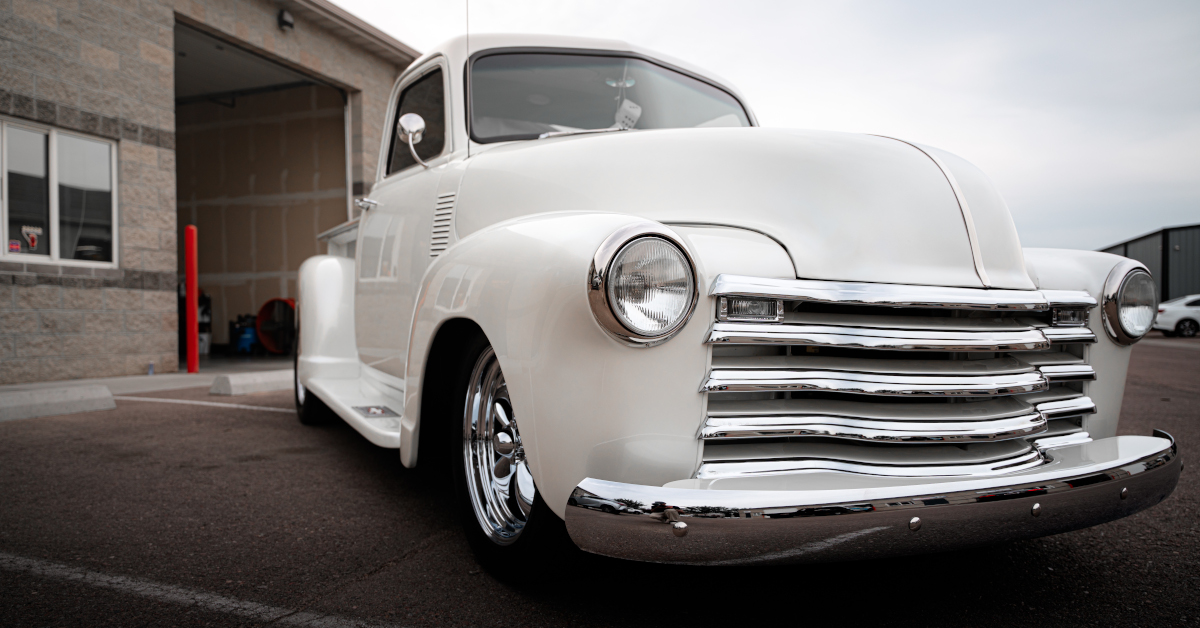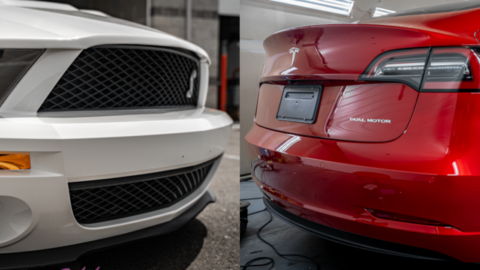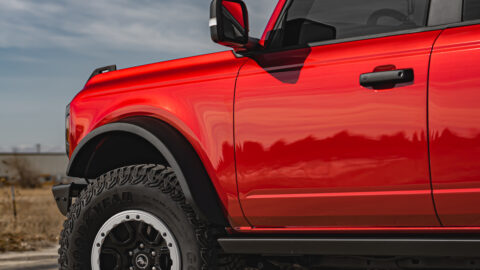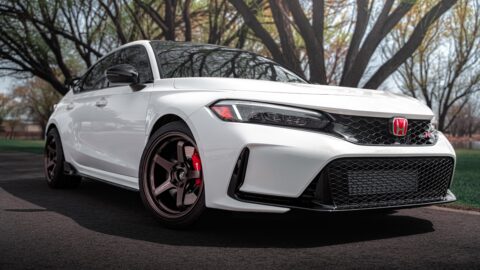
How to Protect the Paint on Vintage Cars with Paint Protection Film (PPF)
Vintage cars possess a timeless charm that captivates enthusiasts and collectors alike. Whether it’s the elegant curves of a classic 1950s convertible or the raw power of a muscle car from the ’60s, vintage automobiles are a testament to automotive history. Preserving their pristine paintwork is not just a matter of aesthetics; it’s about safeguarding a piece of automotive heritage. Let’s explore how to protect the paint on vintage cars with paint protection film (PPF).
|
Key Takeaway |
|
Paint protection film (PPF) safeguards the paint on vintage cars by acting as a durable and transparent barrier, shielding it from rock chips, UV rays, minor abrasions, and environmental contaminants, therefore preserving the original paint’s quality and appearance. |
Understanding the Significance of Vintage Car Paint Protection
Vintage cars are more than just vehicles; they are rolling works of art. The glossy finish on a vintage car isn’t just paint; it’s a historical artifact that represents the craftsmanship of its era. Unlike modern cars, vintage car paint may not have the same advanced protective layers, making it susceptible to wear and tear over time.
The significance of protecting vintage car paint cannot be overstated. It not only preserves the car’s aesthetic appeal, but also maintains its value. Many vintage car enthusiasts take pride in showcasing their vehicles at shows and events, and a well-preserved paint job can make all the difference in winning awards and recognition.
What Is Paint Protection Film (PPF)?
Paint protection film, commonly known as PPF or clear bra, is a clear, durable, and nearly invisible film that is applied to the exterior surfaces of a vehicle. Its primary function is to protect the underlying paint from various forms of damage, such as rock chips, scratches, UV rays, and minor abrasions. PPF is engineered to be both robust and self-healing, ensuring that your car’s paint remains in pristine condition.
PPF comes in various types and qualities, ranging from basic protection to top-of-the-line options with enhanced features. When choosing PPF for your vintage car, it’s essential to consider your specific needs and budget. Garage Slick offers a range of PPF options tailored to meet the unique requirements of vintage car owners.
Advantages of Using PPF on Vintage Cars
So, why should vintage car owners consider using PPF to protect their cherished vehicles? Here are some compelling reasons:
1. Protection Against Rock Chips:
Vintage cars are often driven on scenic routes and open roads, where gravel and debris pose a significant threat to the paint. PPF acts as a shield, absorbing the impact and preventing chips.
2. UV Ray Defense:
Prolonged exposure to sunlight can cause paint fading and degradation. PPF effectively blocks harmful UV rays, preserving your car’s finish.
3. Minor Abrasion Resistance:
PPF’s self-healing properties mean that minor scratches and swirl marks can disappear with time, keeping your vintage car looking flawless.
4. Maintains Original Paint:
Vintage car collectors value originality. PPF allows you to protect the factory paint while keeping it visible and intact.
5. Long-Term Investment:
Installing PPF on your vintage car is a long-term investment that can pay dividends in the form of increased resale value and reduced restoration costs.
The PPF Installation Process
Installing PPF on a vintage car is a specialized process that requires skill and precision. While some automotive enthusiasts may attempt DIY installations, professional installation is strongly recommended to achieve the best results.
The installation process typically includes the following steps:
1. Surface Preparation:
Thoroughly clean and prepare the car’s surface to ensure that no dirt or imperfections are trapped under the PPF.
2. Precise Cutting:
PPF is precisely cut to fit each panel of the vintage car accurately. This step requires a high level of expertise to ensure a seamless and unobtrusive installation.
3. Application:
The PPF is carefully applied to the car’s exterior, starting from one end and gradually smoothing it out to eliminate any air bubbles.
4. Trimming and Wrapping:
The film is trimmed to fit the car’s contours precisely. In some cases, PPF can be wrapped around edges for complete coverage.
5. Quality Check:
A final quality check is performed to ensure that the PPF is flawlessly applied, and the car looks pristine.
5 Simple Maintenance Tips for PPF on Vintage Cars
To maximize the longevity and effectiveness of PPF on your vintage car, it’s essential to follow some maintenance guidelines:
1. Regular Cleaning:
Wash your car regularly to remove dirt, grime, and contaminants. Use a pH-neutral, non-abrasive car wash soap and a soft microfiber wash mitt.
2. Avoid Harsh Chemicals:
Stay away from harsh chemicals and abrasive cleaners that can damage the PPF. Opt for products designed for use with PPF.
3. Use a Soft Cloth:
When drying your vintage car, use a soft, clean microfiber cloth to prevent any scratching.
4. Avoid High-Pressure Washing:
While PPF is highly durable, it’s best to avoid high-pressure washing or automated car washes with abrasive brushes.
5. Inspect for Damage:
Periodically inspect the PPF for any signs of damage or lifting at the edges. Promptly address any issues to prevent further damage to your vintage car’s paint.
Addressing 3 Common PPF Concerns
As a vintage car owner considering PPF, you may have some common concerns. Let’s address them:
Cost of Installation:
The cost of PPF installation varies depending on the type of PPF chosen, the size and complexity of your vintage car, and the expertise of the installer. While it may represent an initial investment, consider it a valuable long-term protection for your prized possession.
Durability:
PPF is known for its durability and can last for many years with proper care. It’s designed to withstand the elements and protect your car’s paint from everyday wear and tear.
Affect on Appearance:
Modern PPF is virtually invisible when applied correctly. It enhances the car’s shine and clarity, rather than detracting from its appearance. Most people won’t even notice it’s there.
Preserve Your Vintage Car’s Beauty and Value With Garage Slick
Protecting the paint on vintage cars with Paint Protection Film (PPF) is a smart investment in preserving both their aesthetic appeal and historical value. Vintage car owners who choose PPF benefit from protection against rock chips, UV rays, minor abrasions, and the preservation of the original paint. With professional installation and proper maintenance, PPF can ensure that your vintage car continues to turn heads for years to come.
Garage Slick, with our dedication to quality service and customer satisfaction, is your trusted partner in vintage car paint protection. As an XPEL certified dealer, we exclusively use XPEL, a brand known for its industry-leading PPF products. Contact us today to discuss your vintage car’s specific needs and discover how XPEL PPF can safeguard your automotive treasure.



